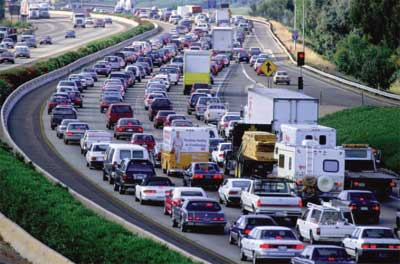NOCoE BiWeekly Newsletter August 4, 2016
Message from the Managing Director
By Patrick Son
 With a humble heart, I would like to express my gratitude for this opportunity to serve as the Managing Director of the National Operations Center of Excellence. It is a wonderful time to be a part of the TSM&O community as we are headed toward a path that is sure to advance our industry for the better. There is a momentum building within our community to advance TSM&O and as the Managing Director, I will strive to join the many champions that are tirelessly working to advance the state of TSM&O around the country. On behalf of the staff/partners and in concert with the Board of Directors and Technical Advisory Committee, we will work to strive to achieve the NOCoE vision, provide exceptional services to the TSM&O community to save lives, reduce congestion, and enhance economic vitality.
With a humble heart, I would like to express my gratitude for this opportunity to serve as the Managing Director of the National Operations Center of Excellence. It is a wonderful time to be a part of the TSM&O community as we are headed toward a path that is sure to advance our industry for the better. There is a momentum building within our community to advance TSM&O and as the Managing Director, I will strive to join the many champions that are tirelessly working to advance the state of TSM&O around the country. On behalf of the staff/partners and in concert with the Board of Directors and Technical Advisory Committee, we will work to strive to achieve the NOCoE vision, provide exceptional services to the TSM&O community to save lives, reduce congestion, and enhance economic vitality.
A New Institutional Approach to Operations
By Charles Wallace, Ph.D.
 Advances in technologies have transformed public agencies involved in the provision of transportation and public safety from largely stove-pipe, highway-focused entities into multi-faceted, multi-jurisdictional, and multimodal organizations. Highway Departments have become Departments of Transportation (DOTs) with operational jurisdiction over not only highways, but all modes of transportation.
Advances in technologies have transformed public agencies involved in the provision of transportation and public safety from largely stove-pipe, highway-focused entities into multi-faceted, multi-jurisdictional, and multimodal organizations. Highway Departments have become Departments of Transportation (DOTs) with operational jurisdiction over not only highways, but all modes of transportation.
As DOTs become more concerned with the operation of highway facilities, the impacts of both recurring and non-recurring congestion have gained an increasing priority within DOTs. Intelligent Transportation Systems (ITS) offer tools not earlier available to help mitigate congestion and respond to traffic incidents and emergencies. Traffic Incident Management (TIM) is becoming—and in many jurisdictions has already become—a multi-disciplinary, multiagency effort to rapidly clear highway incidents and restore normal operations. Please click here to read more.
Live Demo of Connected and Autonomous Vehicle Applications for Emergency Responders
By Steven Lavrenz, Ph.D., EIT
NOCoE Technical Services Manager
 During the joint AASHTO STSMO and TRB RTSMO committee meeting this week in Denver, I was fortunate to participate in numerous discussions taking place on the future direction of Traffic Incident Management (TIM) and Connected & Autonomous Vehicles (CV/AV) for state transportation agencies.
During the joint AASHTO STSMO and TRB RTSMO committee meeting this week in Denver, I was fortunate to participate in numerous discussions taking place on the future direction of Traffic Incident Management (TIM) and Connected & Autonomous Vehicles (CV/AV) for state transportation agencies.
One element that was touched on far less frequently, however, was the opportunity that exists to utilize CV/AVs for TIM applications (or, for that matter, how TIM needs could accelerate the development and deployment of CV/AVs). Such considerations will only grow in importance in the coming months and years – not only for the sake of streamlining standards and technology development, but also for the increasing recognition that conversations around TSMO and TIM need to involve multiple players from the engineering, law enforcement, and emergency response communities. Please click here to read more.
15th International Conference on Managed Lanes--PowerPoint Presentations Available
TRB is sponsoring the 15th International Conference on Managed Lanes from May 4-6, 2016 in Miami, Florida. The workshop will explore planning, design, and operations of managed lanes as well as emerging research needs related to integrating managed lanes into the transportation system. PowerPoint presentations are now available.
10th University Transportation Center Spotlight Conference: Abstracts Due August 9th
TRB is sponsoring the 10th University Transportation Center (UTC) Spotlight Conference on Bicycles and Pedestrians on December 1-2, 2016, in Washington, D.C. The conference will focus on the subject of bike and pedestrian safety, encompassing four comprehensive areas: networks and connectivity, data needs, tools to address bike and pedestrian safety, and equity considerations. Submit abstracts by August 9, 2016.
The event will be designed to identify critical issues associated with bike and pedestrian safety that will challenge state and local transportation agencies; identify on-going research being conducted by the UTCs and other institutions; identify gaps that may exist in the current research; and promote synergies among academic, government, and private industry in meeting the challenges of bike and pedestrian safety.